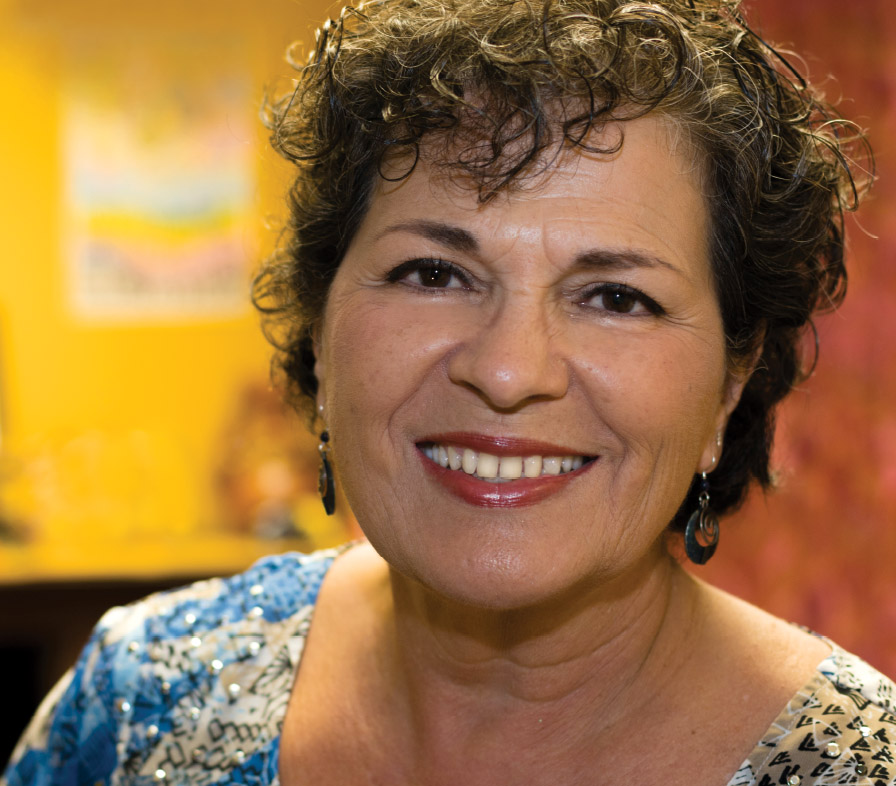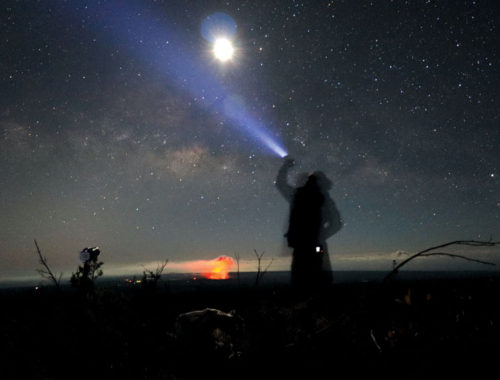
The Galactic Interpretations of Jon Lomberg in Flowers and Other Media
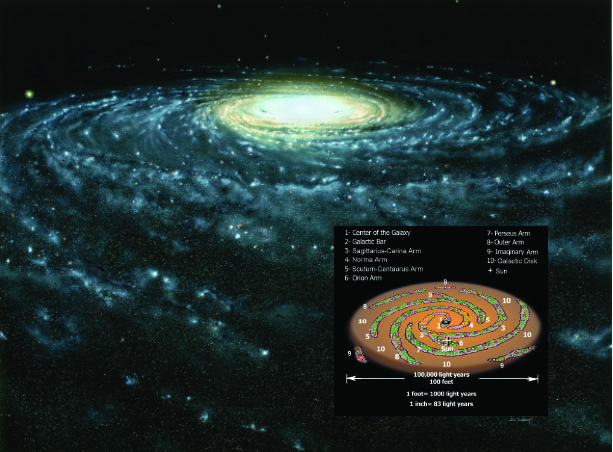
By Marya Mann
Not bigger, however, than galactic, multi-media artist Jon Lomberg can imagine. He has made his living conjuring the scope of the heavens for Earth-centric people like me, who realize the enormity of our galaxy—100,000 light-years across—and feel not small, but elevated.
A Far-Reaching Artistic Mission
“The galactic perspective gives you the sense of how trivial differences like skin color and religion really are,” Lomberg says.
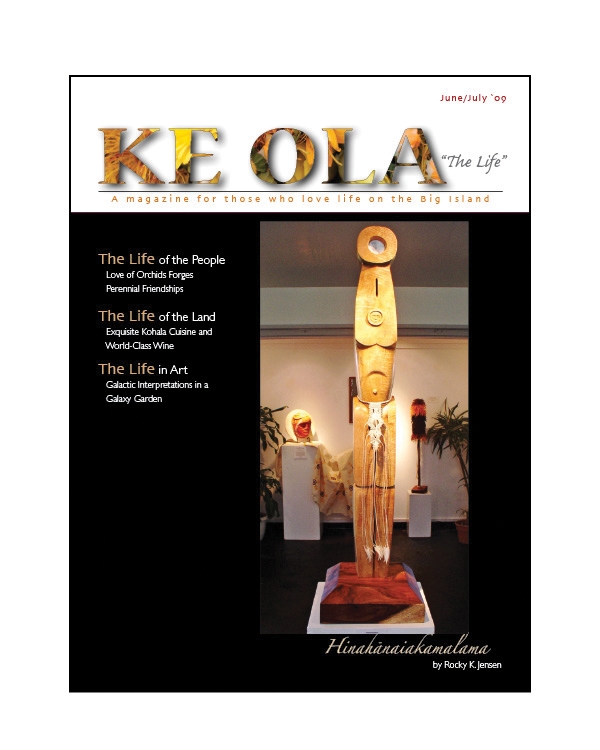
“If we look at humans on the planet in a larger context, we’re all humans, we’re all the same. It brings people out of their entrenched positions and into a completely different context that doesn’t share either of their competing ideologies.”
Using his gifts for science and art to imagine beyond what the human eye can see has made Lomberg something of a visual prophet of the galaxies. It has also taken him on an unconventional path, even for a visionary artist. He credits living in Hawai‘i as enhancing that vision.
Over the last decade, he has partnered with Kona painter Herb Kane on Ocean Planet, which depicts Hawai‘i as the center of a Pacific Rim view of the world. He spent two years crafting a special Kona Beach photograph for a space mission to Titan, one of Saturn’s moons.
But his collaboration on the construction of the only accurate, walk-through, full-scale Garden of the Galaxy is perhaps his most vibrant expression yet in a life filled with art about the galaxy.

As chief artist for Carl Sagan’s Emmy Award winning TV series, Cosmos, Lomberg had a 24-year collaboration with Dr. Sagan.
“The main idea is to use the knowledge we gain from science for a perspective on those deep questions: who are we, why are we here, and where is here anyway? I feel that the greatest luck I had was finding such a good working relationship with Carl Sagan, who was a genius at communication. I learned from him by emulating him. He’s gone, but people have this desire to connect with the universe. They’re still hungry. So what excites me now is helping people to understand.”
The healthy, sun-tanned, working artist wears a T-shirt silk-screened with his own “Starseeds” design. A swimmer who says his best meditations are in the ocean water, he doesn’t look his 60 years. Nor does he look like the kind of person you’d expect to have a friendly asteroid near Mars named after him; but he does. (Previously called 6446 1990QL, Asteroid Lomberg was re-named in recognition of his achievements in the field of science communication.) Pretty far out.
Add to that the work the Honaunau resident (since 1987) has done illustrating a whole galaxy of books and magazine articles. He brought the universe to life in the Warner Brothers film, Contact with Jodie Foster and Matthew McConaughey, and has made science programs in a range of media from acrylics to Photoshop to radio.
Radio? A painter making radio? “Radio is the most visual of all media,” says the unconventional artist, who worked for the Canadian Broadcasting Corporation in Toronto. “People get visions in their mind and your job in radio is to inspire and elicit those visions.”
Hawai‘i and the Portrait of the Milky Way
Lomberg’s most famous work of art, “Portrait of the Milky Way,” was showcased in the main gallery of the National Air and Space Museum for ten years. Considered the most accurate painting of the galaxy, it was commissioned by the Smithsonian Institution after the artist had moved to Hawai‘i. “I think I was much more alive, much more attuned to the skies, by the time I did that painting from living here,” he says.

As a child in Philadelphia and later working in New York, he was captivated with the sweep of the universe, but he couldn’t really see the stars through the light-polluted skies. “Even though I knew a lot about astronomy, I didn’t really know the skies until I moved to Kona because learning the skies without seeing them is like learning about painting without being able to see any paintings.
“Seeing the cycles, how the stars would change seasonally, how the sunset would move back and forth along the horizon during the year, how these ancient cycles are in us, even if we don’t realize it,” changed him. “We respond to the lunar cycles, the stellar cycle, the solar cycle. All of these cycles are really the rhythm of life.
“You don’t hear that rhythm, you don’t feel that rhythm until you participate in it.”
Voyager and the Galaxy Garden
As we sip coffee across the street from the Lavender Moon Gallery in Kainaliu, where his collaborative painting with Kane is on display, I ask Lomberg how he conceives of the work he sends aboard spacecraft as messages to other species.
“I try to put myself in the position of an extraterrestrial,” the artist says.
I think this man may have the most interesting job description in the world: “Artist who can think like an extraterrestrial.”
He designed a portrait of our world in pictures for the Voyager Interstellar Golden Record, launched aboard a NASA spacecraft in 1977. “What is it that most represents our humanity? Who are we?” he asked himself. In response he created an unusual, durable, and far-flung collection of artifacts.
His Voyager art, containing music, human speech, and a picture story that describes Earth and its inhabitants, is now traveling beyond Pluto and has an estimated lifetime of one billion years.
Another piece he designed was intended as a space message to describe humanity to intelligent aliens in a photograph. Lomberg’s idea was to create a “Portrait of Humanity,” depicting the range of human relationships.
After two years of research and precision design, the photo was captured with photographer Simon Bell in 1997 on Makalawena Beach with Kohala and Kona residents as subjects. The compelling photo includes a mother nursing, a fisherman launching a canoe, and a grandmother at the center of a group of happy people under a perfect Hawaiian sky.
Surprisingly, the project was scrapped when NASA officials chose instead to send a long list of peoples’ names—a publicity “stunt,” according to some. The feel-good “message” might be fun for the people named, but it would be meaningless to ETs. Although the photo wasn’t launched, it still represents an objective portrait of humankind and provokes the question of how we view ourselves.
Growing a Galaxy Garden
His idea for a walk-through scale model of the galaxy came to life in the late 1990s when Lomberg and his neighbor, Barbara DeFranco, owner of Paleaku Peace Gardens, decided to pick up shovel and hoe to begin work on this unique planting. Supported by funds from the Change Happens Foundation, help from students at Konawaena High School, and other volunteers, the Galaxy Garden was created at the retreat center on Painted Church Road in Honaunau.
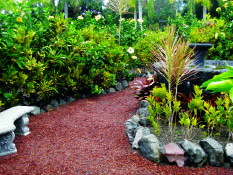
“For years there have been scale models of the solar system, the inner and outer planets around our sun, but the Galaxy Garden at Paleaku is the only one of its kind,” he says.
In this educational installation, a variety of plantings represent the constellations, demonstrating the scale of Earth within the galaxy as a speck on a leaf.
“The garden shows how connected we all are,” says DeFranco. “It gives us a visceral feeling of connection to our galaxy, and manifesting a vision like this touches your heart.”
If you want to sense that connection for yourself, visit the Galaxy Garden’s website. To see more of Mr. Lomberg’s work, you can go to Lavender Moon Gallery in Kainaliu and visit his website. Paleaku is now open on Saturdays again. Every Tuesday through Saturday, 9 am – 4 pm. A small donation is requested, but what the heck, it is the only Galaxy Garden in the world. ❖
